When people first started collecting fish, invertebrates, and plants, they kept them in large glass bowls and hand-made glass viewing boxes.
In the 1800s, a British naturalist named Philip Gosse invented a new word for these glass containers. He combined the Latin words aqua (water) and arium (a place for relating to) to form the word…you guessed it…aquarium!

Now there was an official name for these custom-made glass boxes that contained rare and exotic aquatic life.
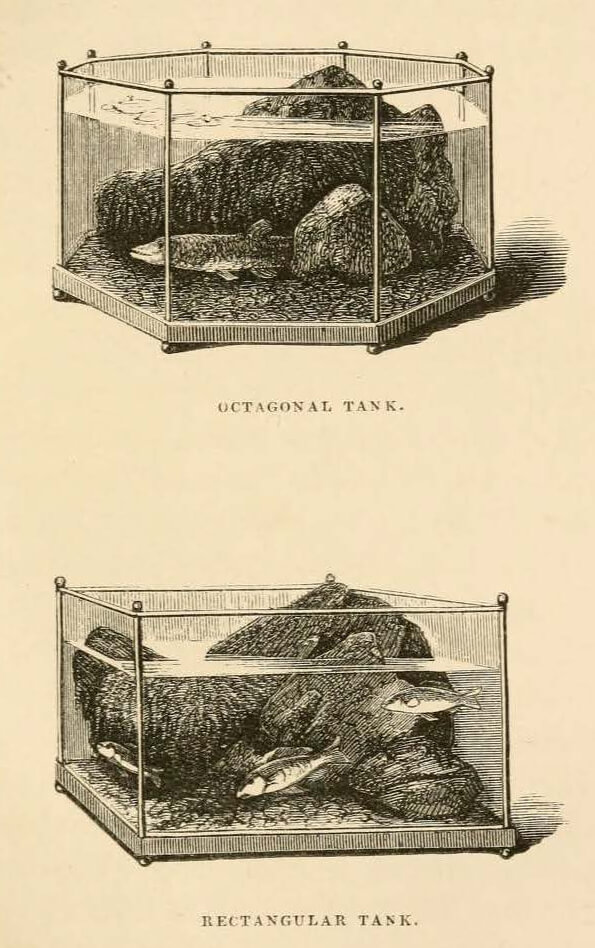
Early aquariums were constructed of glass and ornate metal framing to support the weight and pressure of the water.
Slate was often used on the bottom of the aquarium to provide strength. In addition, various sealing chemicals were used to waterproof the tank and hold the glass in place.
As the hobby grew, so did the manufacture of aquariums. The first commercially available aquariums still used a slate base but incorporated a stainless-steel frame to support the glass.
Black tar sealant was used to bond the pieces of glass together and make the tank waterproof. Unfortunately, these aquariums were heavy and expensive to make.
When General Electric invented silicone sealant, all this changed. Aquariums could be constructed with a glass bottom, sealed with clear silicone, and use a lightweight plastic frame. Then along came acrylic.
[toc]
What is Acrylic?
A new type of clear plastic known as “acrylic glass” was invented in 1928. Acrylic-poly, methyl methacrylate, is also known as Plexiglas, Perspex, and Lucite and Perspex.
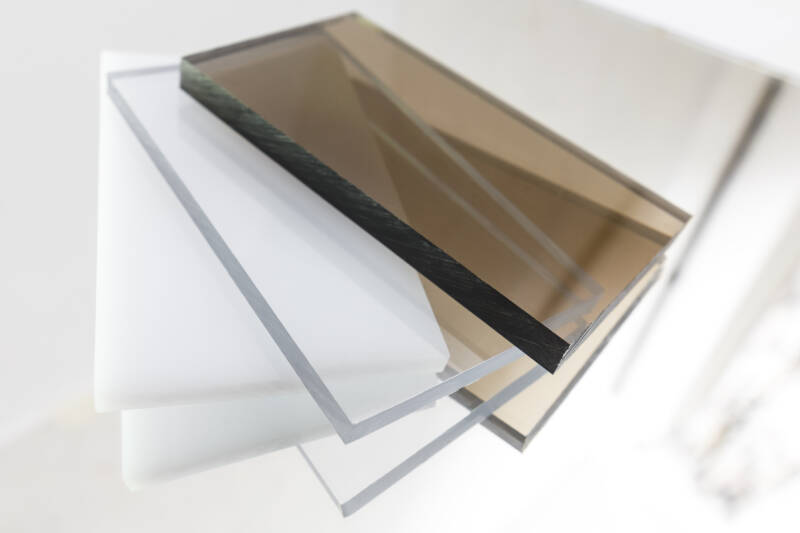
This strong, lightweight plastic was used as a glass substitute in industry and aircraft manufacture.
Submarine periscopes used acrylic instead of glass. The material is also used to make goggles, bullet-proof glass, and cockpit windshields.
The dawn of acrylic aquariums
In 1966 a Japanese company used acrylic sheets to build a display tank for a public aquarium. Until then, glass was the only material used on the viewing area of display aquariums.
Acrylic sheets became popular for use in large concrete tanks that housed dolphins and other aquatic life that required a lot of swimming room.
Today acrylic is used on nearly all large-scale displays at public aquariums. In addition, advances in bonding technology allowed large sheets of acrylic to be “welded” together, creating solid and water-tight seals.
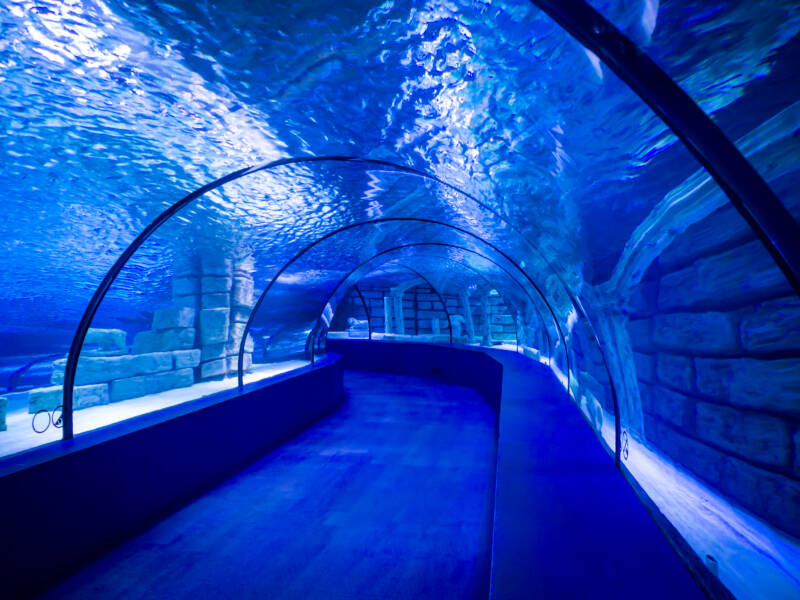
In 1979 the first aquarium “tunnel” was constructed at SeaWorld Orlando. The tunnel made it seem like you were walking along the bottom of the ocean while sharks swam overhead.
Much of the engineering work required to build large acrylic aquariums was developed during the 1970s through the 1980s. This technical knowledge was used to build smaller home aquariums for the hobbyist market.
Today you’ll find a wide array of small acrylic aquariums designed for use in the home.
Acrylic comes to the aquarium hobby
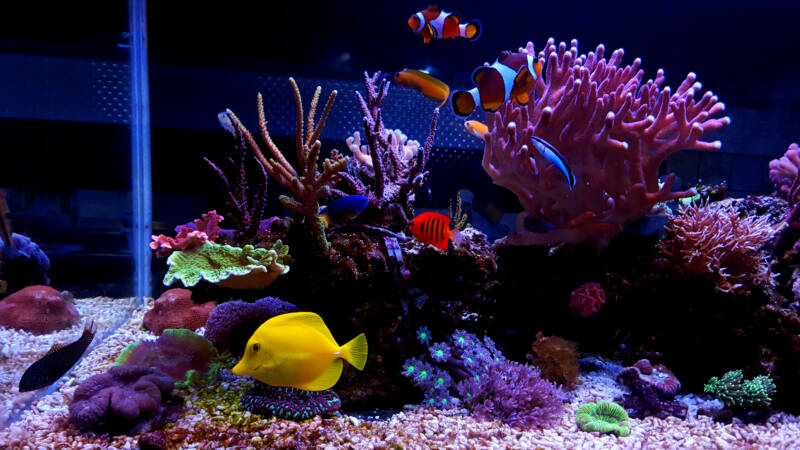
When acrylic aquariums first hit the hobby market, people were intrigued. Unlike glass tanks, acrylic aquariums had no visible silicone-sealed seams.
Some designs even had curved corners, eliminating the traditional boxy look of glass aquariums.
Acrylic is relatively easy to carry, cut, and bond together. Unlike glass, few specialized tools are needed to work with acrylic. This allowed people to start their own acrylic aquarium companies in their garage.
Unfortunately, some amateur manufacturers built their aquariums with inferior materials and thin acrylic. This led to isolated reliability issues and turned some aquarists off to the idea of acrylic tanks. Today the manufacture of acrylic aquariums is highly refined and reliable.
What’s the difference between glass and acrylic aquariums?
There are strong opinions about glass vs acrylic aquariums. You’ll find conflicting information online.
If you’re weighing the differences, it can be confusing. The truth is, each material has pros and cons. We’ll sort out the differences with this Q&A section.
If I want a bowfront aquarium I have to go with acrylic, right?
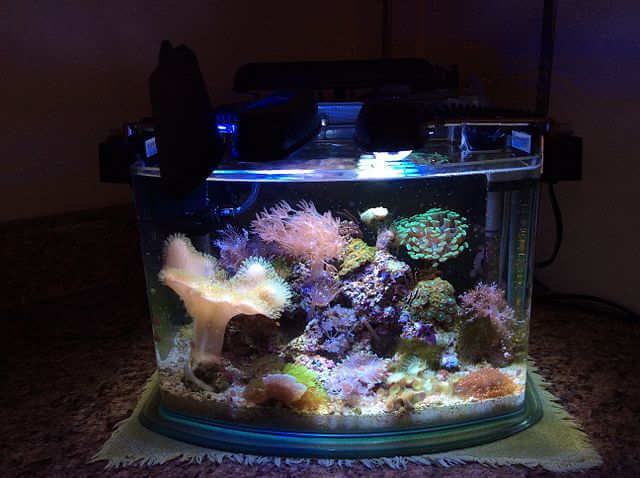
In the past, if you wanted a curved tank or an aquarium with rounded corners, acrylic was the only option. Today you’ll find glass bowfront and curved corner aquariums in many sizes.
Is a glass aquarium heavier than an acrylic tank?
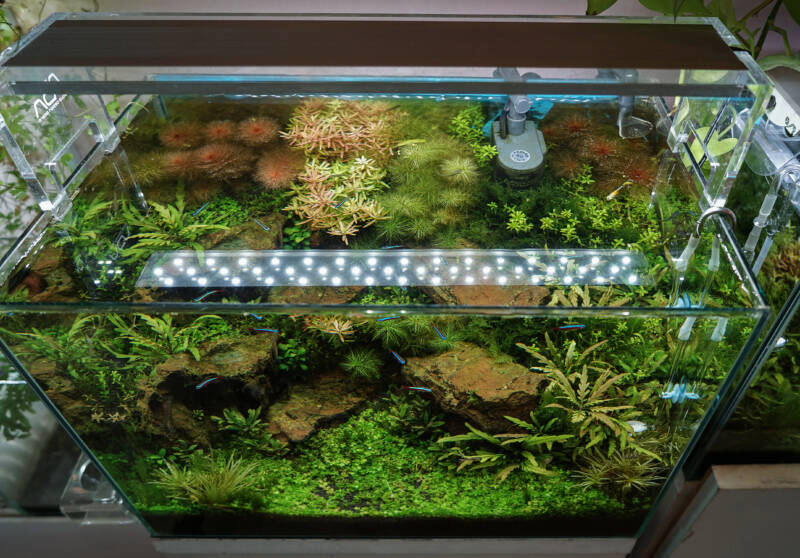
Yes. Depending on the size of the aquarium, a glass tank can be 10-times heavier than a similar-sized acrylic aquarium.
Large glass aquariums often require two people to carry and set the tank on a stand.
Is acrylic more clear than glass?
When acrylic aquariums first came to market, nearly all glass aquariums were built with “regular” glass. It tended to have a blue-green tint that reduced clarity. This gave acrylic tanks the advantage when it came to clarity.
Today low-iron glass is used in many glass aquariums. This modern glass is crystal clear and rivals acrylic in clarity.
I’ve read that acrylic will yellow with age
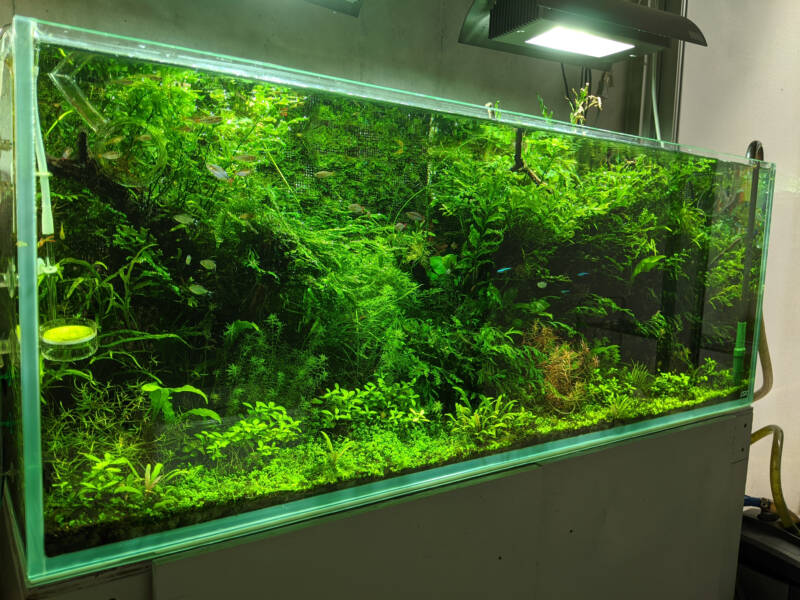
While its true plastics are affected by sunlight, it is highly unlikely that your acrylic aquarium will yellow even after many years.
Some aquarists claim that their acrylic aquariums became “cloudy” with age. This could be caused by long-term exposure to sunlight (UV rays), much like automotive headlights that become “fogged.”
Haziness can also be caused by years of abrasive algae-scraping and glass cleaning.
Are glass aquariums more resistant to scratching?
Yes. Great care must be taken with cleaning the inside and outside of acrylic aquariums. Even a tiny sand grain stuck on an algae scraper will scratch acrylic.
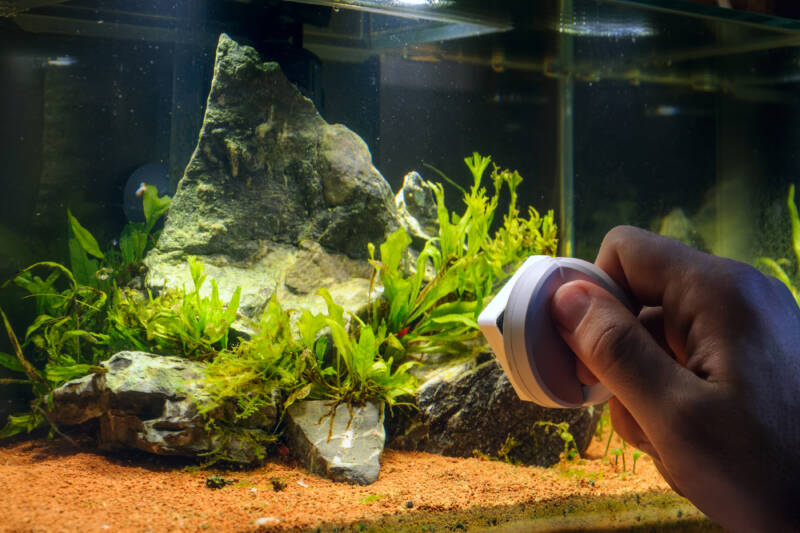
Many careless aquarists have damaged their new acrylic tanks by pushing an algae scraper into the gravel then cleaning the glass.
Special microfiber cloths and acrylic polishes are recommended for cleaning the outside of the tank.
Can I scratch a glass aquarium?
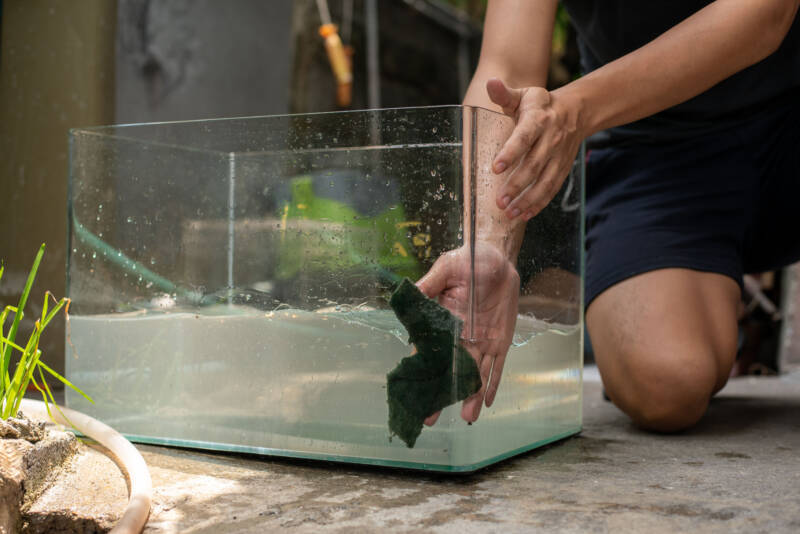
Yes. It is possible to scratch a glass tank. Gravel stuck to an algae scraper is the number-one cause of scratches.
No matter what tool you use to clean the glass, be gentle. Even glass, over time, can accumulate scratches.
Use a soft cloth on the outside of the glass to remove smudges and water spots.
Can scratches be repaired?
Once glass is scratched, it can’t be repaired. Scratches in acrylic can be buffed out using a scratch repair kit.
Are glass aquariums less expensive?
In most cases, a glass aquarium will cost less than a similar acrylic tank.
I want an open-top aquarium
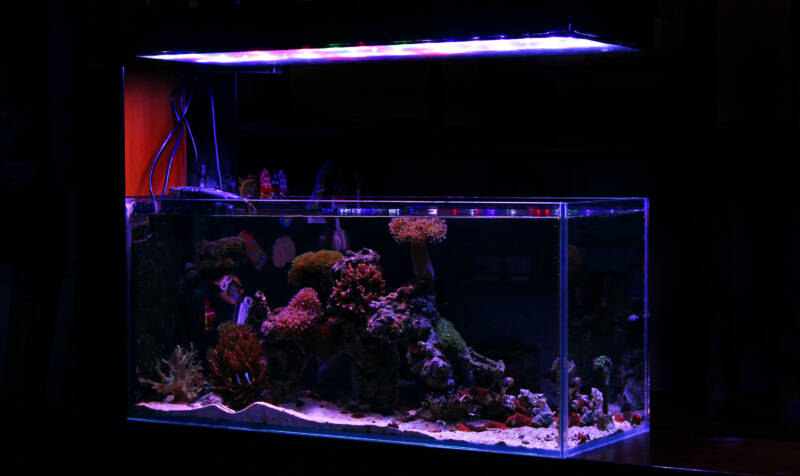
Many reef and planted tank enthusiasts suspend the lighting system above the aquarium. This requires the top of the aquarium to be free of obstructions caused by braces and support frames.
Acrylic aquariums, especially larger tanks, tend to flex more than glass. This requires the top of the aquarium to have acrylic braces that will reduce the amount of open space at the top of the tank. You’ll lose light penetration and have a harder time working inside an acrylic aquarium.
Check the design of the acrylic aquarium you are considering to see if this will be an issue for your goals.
Can I use an aquarium hood and light on an acrylic tank?
No. Acrylic aquariums do not use a plastic frame like traditional glass aquariums.
An aquarium hood sits inside the plastic frame used on glass tanks. It won’t work with an acrylic tank. You will be able to set the light fixture on top of the acrylic aquarium.
Check the design of the aquarium when planning your tank.
Final Thoughts
Acrylic is used primarily for the construction of large custom aquariums in restaurants, offices, and institutions.
It is easy to work with, and the lightweight makes the aquarium easy to move and install, especially for large projects.
Acrylic is often used to manufacture filter sumps and protein skimmers. When shopping for an aquarium, nearly all of today’s budget aquariums are made with glass.
Low-iron glass is used on rimless and high-end reef and planted aquariums where clarity is very important for viewing aquatic life.
If you’re looking for a bowfront aquarium, you’ll find many inexpensive designs that are made of glass.
While glass is the most common and economical material, you can find acrylic aquariums online. You can even have a custom tank built and pre-drilled for an external filtration system.
If you have any questions or comments, please leave them below.
